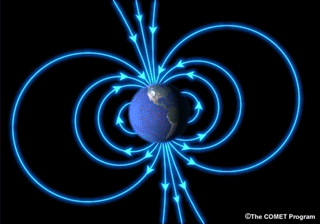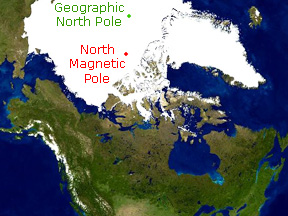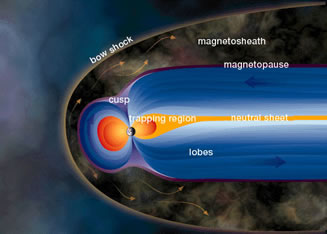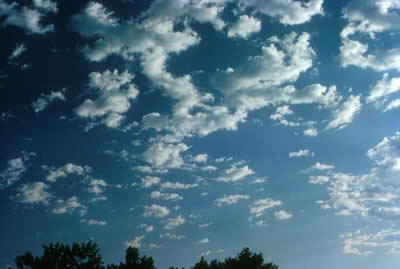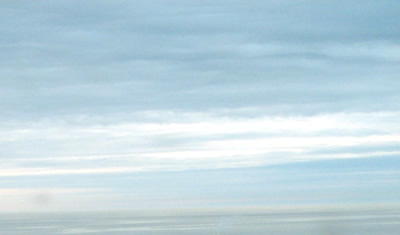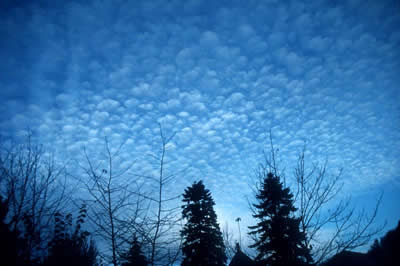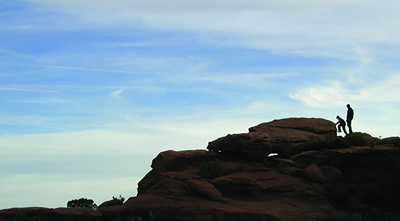Charged Particle Motion in Earth's Magnetosphere
Precipitation of Magnetospheric Charged Particles
Magnetospheric charged particles on closed magnetic field lines (both ends of which penetrate the earth’s atmosphere) find themselves in a magnetic mirror geometry. Unless they are traveling nearly parallel to the magnetic field, they bounce back and forth between the Northern and Southern Hemispheres on paths high above the dense regions of the earth’s upper atmosphere.
If, however, their paths are nearly parallel to the field lines, they can reach atmospheric regions where they collide with neutrals. By this process, charged particles precipitate from the magnetosphere into the atmosphere. The range of small pitch angles through which particles are precipitated is called the loss cone.
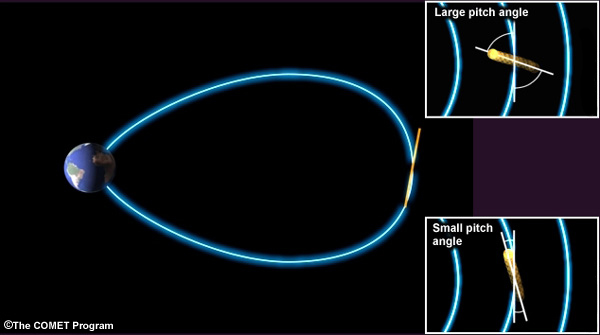
As plasma sheet field lines approach the earth, the loss cone expands. In addition, charged particles can be scattered into the loss cone by magnetic and electrical disturbances in the magnetosphere. Particles precipitated via the loss cone from the magnetosphere into the upper atmosphere produce the aurora.
|
|



